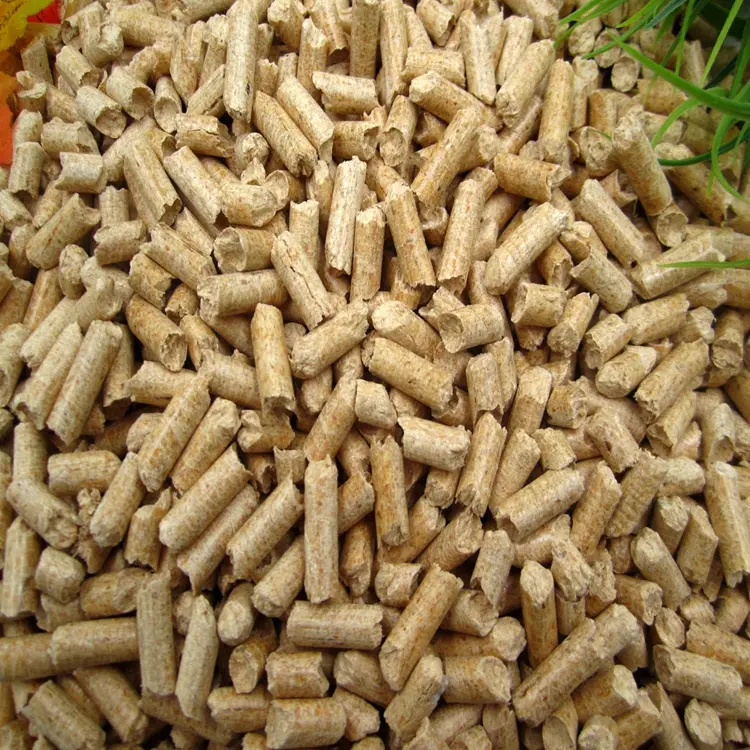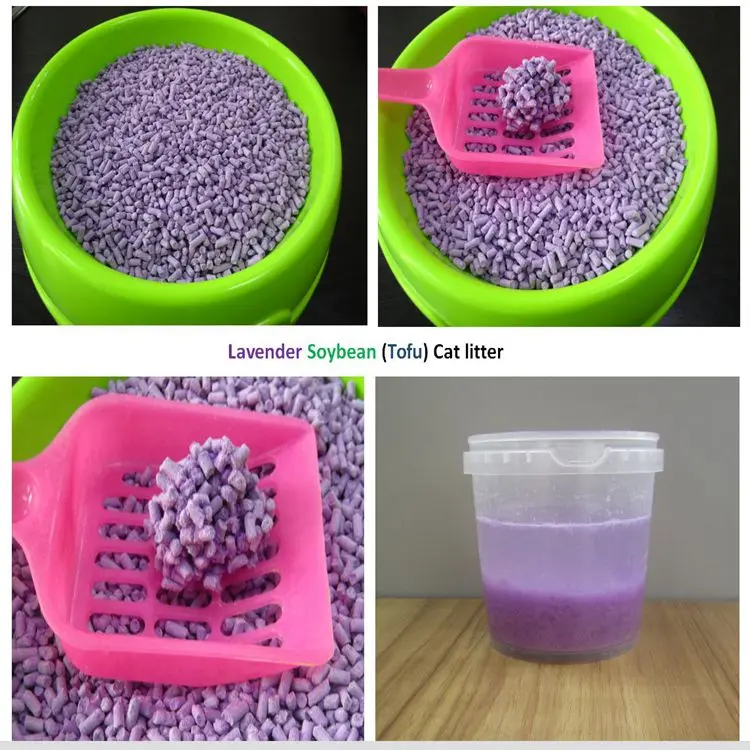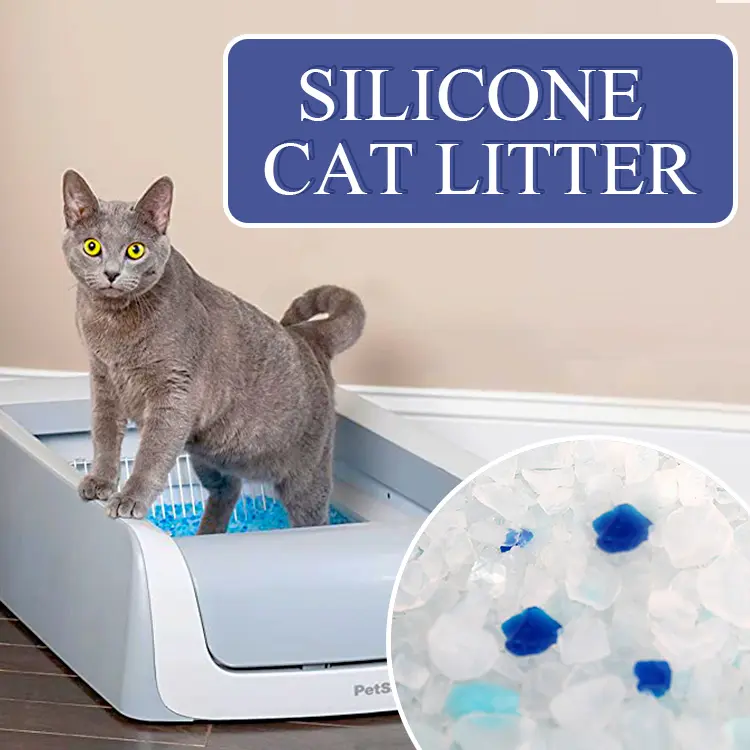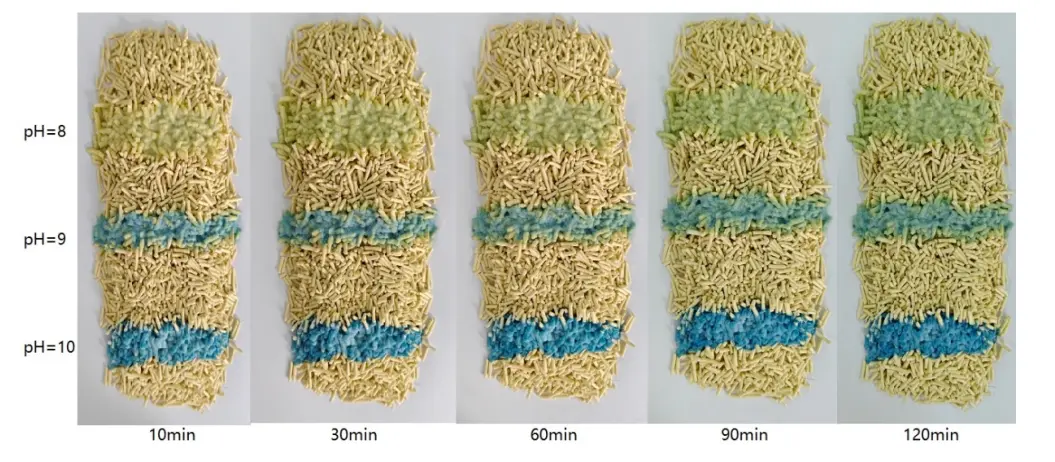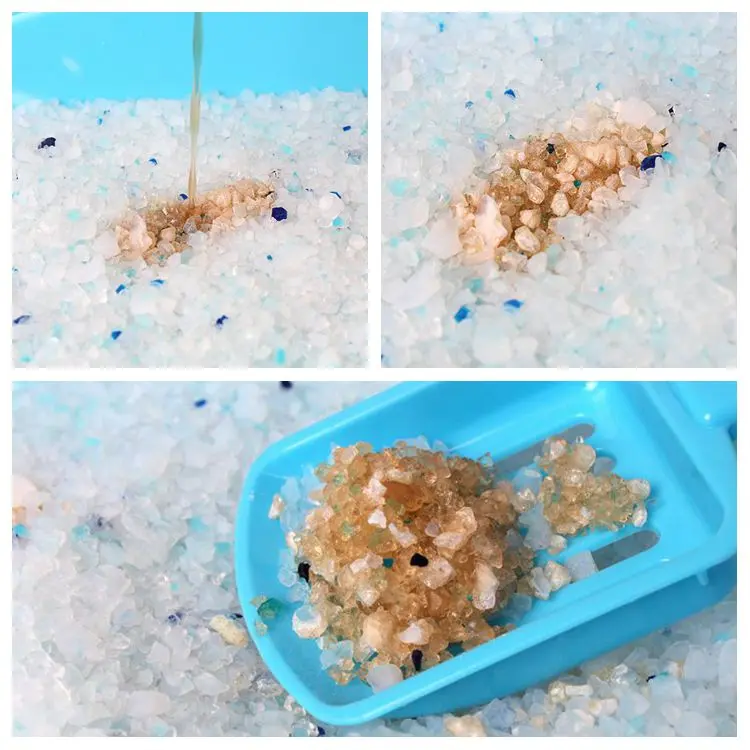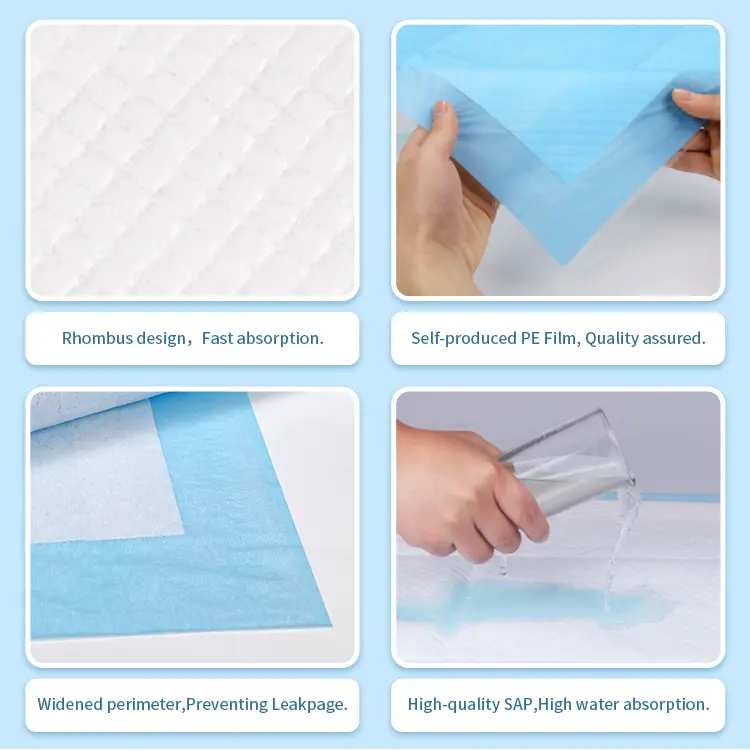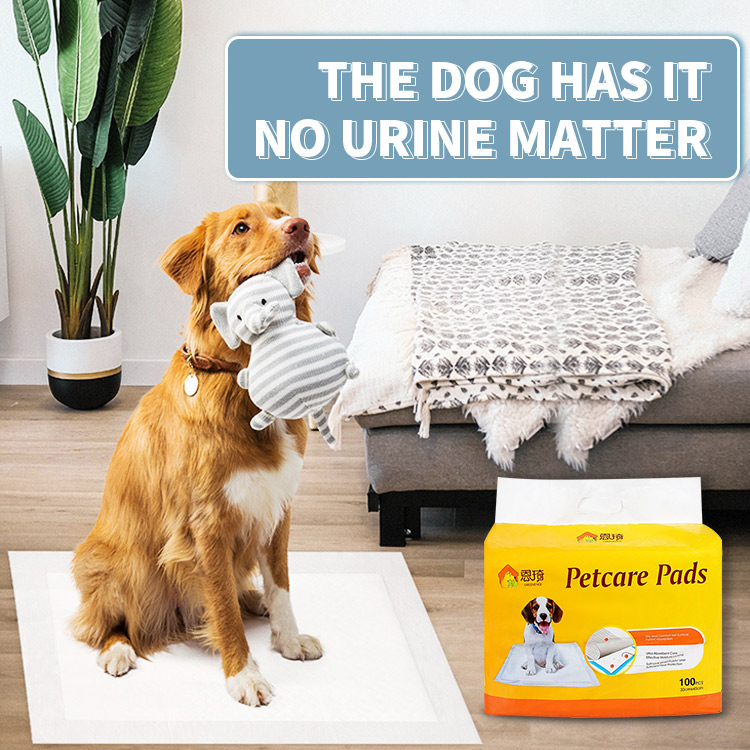Clumping Wood Cat Litter: An Innovative Solution for Modern Pet Care
Cat litter is an essential component of feline care, providing a sanitary and convenient solution for indoor cat waste management. Traditional clay-based litters have long dominated the market, but concerns about environmental sustainability and health have led to the development of alternative materials. One such innovation is clumping wood cat litter, which has gained popularity for its eco-friendly properties and effective performance. This essay explores the features, benefits, and considerations of clumping wood cat litter, positioning it as a forward-thinking choice for pet owners and an environmentally conscious option.
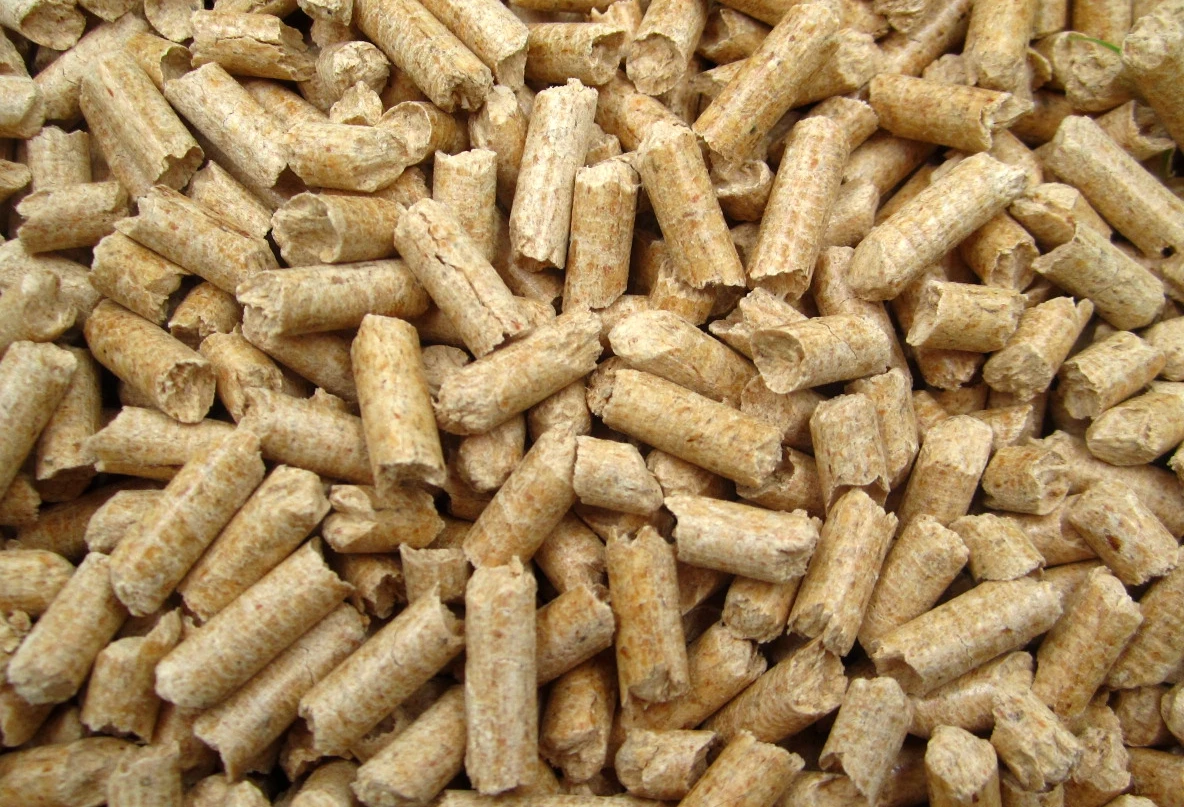
Understanding Clumping Wood Cat Litter
Clumping wood cat litter is derived from wood fibers, typically sourced from renewable resources like pine, cedar, or other softwoods. The production process involves compressing these fibers into granules or pellets, which are then treated to enhance their clumping ability. When exposed to moisture, the granules expand and form solid clumps, making waste removal easier and more efficient. This mechanism mirrors the function of traditional clumping clay litters but with notable differences in material properties and environmental impact.
Advantages of Clumping Wood Cat Litter
1. Environmental Sustainability
One of the most significant advantages of clumping wood cat litter is its environmental sustainability. Unlike clay-based litters, which are extracted through strip mining—a process that causes significant ecological disruption—wood litter is made from renewable resources. The wood used is often a byproduct of the lumber industry, ensuring that no additional trees are cut down solely for litter production. Furthermore, wood litter is biodegradable and compostable, reducing landfill waste and contributing to a more sustainable waste management cycle.
2. Health Benefits
Clumping wood cat litter offers health benefits for both cats and their owners. Traditional clay litters often contain silica dust, which can be harmful when inhaled, potentially leading to respiratory issues in both cats and humans. Wood-based litters, in contrast, are virtually dust-free, minimizing the risk of respiratory problems. Additionally, wood has natural antimicrobial properties, which help to control odor and inhibit the growth of bacteria and mold.
3. Odor Control
Odor control is a critical factor in choosing cat litter, and clumping wood litter excels in this regard. Wood fibers naturally absorb moisture and neutralize odors, often more effectively than clay-based litters. The natural scent of wood, particularly pine, can also provide a pleasant aroma that masks unpleasant smells. This dual mechanism—absorption and scent—ensures that the litter box remains fresh for longer periods, contributing to a more pleasant indoor environment.
4. Clumping Ability
Effective clumping is essential for easy waste removal, and clumping wood cat litter performs well in this area. When the granules come into contact with moisture, they form solid clumps that can be easily scooped out, leaving the remaining litter clean and dry. This not only simplifies maintenance but also reduces the frequency with which the entire litter box needs to be changed, saving time and resources.
Considerations and Challenges
While clumping wood cat litter offers numerous benefits, there are also some considerations and potential challenges that pet owners should be aware of.
1. Cost
One of the primary concerns with clumping wood cat litter is its cost. On average, it tends to be more expensive than traditional clay litters. This higher price point can be a deterrent for some pet owners, particularly those with multiple cats. However, the longer-lasting nature and reduced need for frequent complete litter changes can offset the initial cost over time.
2. Availability and Variety
Although clumping wood cat litter is becoming more popular, it is still less widely available than clay-based options. This can limit choices for pet owners in some regions or those looking for specific brands. Additionally, the variety of wood litters may not be as extensive as clay litters, potentially limiting options in terms of texture, scent, and clumping performance.
3. Transition for Cats
Cats can be particular about their litter preferences, and transitioning from clay to wood litter may require some adjustment. Some cats might initially resist using wood litter due to its different texture and scent. To facilitate a smooth transition, pet owners can gradually mix increasing amounts of wood litter with the current clay litter until the cat becomes accustomed to the new material.
4. Tracking and Scatter
Like all types of cat litter, clumping wood litter can be tracked outside the litter box, leading to scattered granules around the home. However, wood litter generally tracks less than fine clay litters due to its larger granule size. Using a litter mat outside the box can help to minimize this issue and keep the area clean.
Practical Tips for Using Clumping Wood Cat Litter
To maximize the benefits of clumping wood cat litter, pet owners can follow several practical tips:
1. Gradual Transition: When switching to wood litter, mix it with the current litter to help your cat acclimate to the new texture and scent.
2. Adequate Depth: Ensure the litter box has a sufficient depth of litter (typically 2-3 inches) to allow for proper clumping and absorption.
3. Regular Scooping: Scoop the litter box daily to remove clumps and maintain cleanliness. This helps to extend the life of the litter and control odors effectively.
4. Complete Changes: Periodically, the entire litter box should be emptied, cleaned, and refilled with fresh litter to ensure optimal hygiene.
5. Litter Mats: Place a litter mat outside the box to catch any tracked granules and reduce scatter around the home.
What Are The Environmental Benefits Of Clumping Wood Cat Litter Compared To Traditional Clay Litters?
Clumping wood cat litter stands out as an environmentally sustainable alternative to traditional clay-based litters, offering several significant environmental benefits. Understanding these benefits requires a comparison of the production, use, and disposal processes of both types of litter.
1. Renewable Resource Utilization
Clumping wood cat litter is typically made from wood fibers derived from renewable resources such as pine, cedar, or other softwoods. These wood fibers are often sourced as byproducts from the lumber industry, meaning that no additional trees are cut down specifically for litter production. This contrasts sharply with clay litters, which are made from bentonite clay, a non-renewable resource obtained through strip mining. Strip mining is an invasive process that causes extensive environmental degradation, including deforestation, habitat destruction, and soil erosion.
2. Production Impact
The production of clay litter involves energy-intensive processes, including mining, drying, and crushing the clay, all of which contribute to greenhouse gas emissions and resource depletion. In contrast, the production of wood litter is less energy-intensive. The wood is typically sawed into small pieces, dried, and then compressed into granules or pellets. This process consumes less energy and produces fewer emissions, making it a greener alternative.
3. Biodegradability and Waste Reduction
One of the standout features of clumping wood cat litter is its biodegradability. Wood litter naturally breaks down over time, reducing its impact on landfills. It can also be composted, turning into useful organic matter that can enrich soil. In contrast, clay litter is not biodegradable and remains in landfills indefinitely, contributing to long-term waste management issues. The heavy, non-degradable nature of clay litter significantly adds to landfill mass.
4. Health and Environmental Safety
Wood fibers have natural antimicrobial properties that help control odors and inhibit the growth of bacteria and mold. This reduces the need for chemical additives commonly found in clay litters, which can leach into the environment and cause pollution. Additionally, the minimal dust produced by wood litter reduces airborne particles that can contribute to respiratory issues in both cats and humans.
5. Water and Soil Protection
The runoff from clay mining operations can contaminate local water supplies, affecting aquatic ecosystems and potentially entering human water sources. The chemicals used in the processing of clay litter can also seep into the soil, affecting its quality and the health of surrounding flora and fauna. Wood litter production, on the other hand, poses minimal risk to water and soil quality. The organic nature of wood fibers means that any leaching is much less harmful and can be naturally absorbed and broken down by the environment.
6. Sustainability and Carbon Footprint
By using byproducts of the lumber industry, clumping wood cat litter contributes to a more circular economy. This practice maximizes the utility of harvested wood and reduces overall waste. The carbon footprint of wood litter is also lower, as the entire lifecycle—from production to disposal—generates fewer greenhouse gases compared to clay litter.
7. End-of-Life Impact
At the end of its lifecycle, wood litter can be composted or used as mulch in gardens, provided it is free from harmful chemicals and pathogens. This repurposing not only diverts waste from landfills but also enriches the soil, contributing to a more sustainable ecosystem. Clay litter, devoid of any such end-of-life benefits, simply accumulates in landfills, posing long-term environmental challenges.
In summary, clumping wood cat litter offers numerous environmental benefits over traditional clay litters. Its use of renewable resources, lower production impact, biodegradability, reduced chemical additives, minimal dust, and positive end-of-life contributions make it a superior choice for environmentally conscious pet owners. By opting for wood litter, pet owners can significantly reduce their ecological footprint while providing effective and safe waste management for their feline companions.

How Does Clumping Wood Cat Litter Compare To Clay-Based Litters In Terms Of Performance And Maintenance?
When comparing clumping wood cat litter to traditional clay-based litters, several key factors come into play, including odor control, clumping ability, ease of maintenance, and overall performance. Each type of litter has its strengths and weaknesses, and understanding these can help pet owners make an informed decision.
1. Odor Control
Odor control is a critical consideration for any cat litter. Clumping wood cat litter is often praised for its natural odor-neutralizing properties. Wood fibers, particularly those from pine, naturally absorb and neutralize odors, keeping the litter box smelling fresher for longer periods. The natural scent of wood can also provide a pleasant aroma, which masks unpleasant smells effectively.
In contrast, clay-based litters control odor primarily through the addition of chemical fragrances and deodorizers. While effective, these additives can sometimes be overpowering or cause allergic reactions in sensitive cats and humans. Additionally, the heavy reliance on chemicals in clay litters can pose health concerns.
2. Clumping Ability
Clumping is essential for easy waste removal and maintaining a clean litter box. Both clumping wood and clay-based litters are designed to form solid clumps upon contact with moisture. However, the clumping mechanisms differ.
Wood litter granules expand and bind together when wet, forming firm clumps that are easy to scoop. These clumps tend to be lightweight and do not break apart easily, ensuring efficient waste removal. Clay litter, made from bentonite clay, is known for its strong clumping properties. It forms very tight, heavy clumps that are easy to scoop. However, if not promptly removed, these clumps can become sticky and difficult to clean, adhering to the litter box's surface.
3. Ease of Maintenance
Daily scooping and regular cleaning are necessary to maintain a hygienic litter box. Clumping wood litter, due to its lightweight nature, is easier to scoop and handle. The granules do not adhere to the bottom of the litter box as much as clay litter, making the entire cleaning process more straightforward. Additionally, wood litter tends to produce less dust, reducing the need for frequent sweeping around the litter box area.
Clay-based litter, while effective in clumping, can be heavier and more cumbersome to handle. The fine dust produced by clay litter can settle around the litter box, requiring more frequent cleaning of the surrounding area. Over time, the accumulation of clay dust can also create a messier environment.
4. Health Considerations
Health implications for both cats and their owners are important when choosing a litter. Clumping wood cat litter is generally healthier due to its low dust production and natural antimicrobial properties. The absence of silica dust, which is prevalent in clay litters, reduces the risk of respiratory issues. Moreover, the natural composition of wood litter minimizes the exposure to potentially harmful chemicals and additives.
Clay-based litters, especially those that produce a significant amount of dust, can contribute to respiratory problems in cats and humans. Inhaling silica dust over prolonged periods can lead to lung issues. Additionally, some cats may develop allergies or sensitivities to the chemical additives used for odor control in clay litters.
5. Tracking and Scatter
Tracking, where litter particles are carried out of the box on a cat’s paws, is a common issue with all types of litter. Wood litter, with its larger granules, generally tracks less than fine clay litter. However, it is not completely free from tracking. Using a litter mat can help reduce the amount of litter spread around the home.
Clay litter, especially the finer varieties, tends to track more and can scatter widely around the litter box area. The fine particles stick to cats' paws and fur, leading to more frequent cleaning of the surrounding areas.
6. Cost and Availability
While clumping wood litter often comes at a higher price point than clay litter, it can be more economical in the long run due to its longer-lasting nature and reduced frequency of complete box changes. The initial cost may be a consideration, but the benefits in terms of performance and maintenance can justify the expense.
In terms of availability, clay litters are more widely available and come in a broader variety of options. Wood litter is becoming increasingly popular but may still be less accessible in certain regions or stores.
In conclusion, clumping wood cat litter and clay-based litters each have their own advantages and drawbacks. Wood litter offers superior odor control, easier maintenance, better health benefits, and reduced tracking. Clay litter excels in clumping ability and is more widely available. Pet owners should consider these factors based on their specific needs and preferences to choose the best option for their feline companions.
What Are Some Tips For Transitioning My Cat To Clumping Wood Cat Litter?
Transitioning your cat to a new type of litter, such as clumping wood cat litter, can be a smooth process with careful planning and patience. Cats are creatures of habit, and sudden changes can sometimes lead to resistance or litter box avoidance. Here are some effective tips to help your cat adjust to clumping wood cat litter:
1. Gradual Introduction
The key to a successful transition is to introduce the new litter gradually. Start by mixing a small amount of the clumping wood litter with your cat’s current litter. Initially, you can use a ratio of about 75% old litter to 25% new litter. Over the course of a week or two, gradually increase the amount of wood litter while decreasing the old litter. This slow integration helps your cat become accustomed to the new texture and scent without feeling overwhelmed by a sudden change.
2. Multiple Litter Boxes
If possible, set up an additional litter box with the new clumping wood litter alongside the existing litter box with the old litter. This gives your cat the option to explore and use the new litter at their own pace. Observe which box your cat prefers and gradually transition the primary litter box once they start using the wood litter more frequently.
3. Positive Reinforcement
Encourage your cat to use the new litter by providing positive reinforcement. Reward your cat with treats, praise, or playtime each time they use the litter box with the clumping wood litter. Positive associations can help ease the transition and make your cat more comfortable with the new litter.
4. Maintain Cleanliness
Cats are more likely to use a clean litter box, so ensure that both the new and old litter boxes are kept clean during the transition period. Scoop both boxes regularly to maintain a hygienic environment. A clean box with the new litter will encourage your cat to use it, reinforcing the transition process.
5. Monitor for Reactions
Pay close attention to your cat’s behavior and reactions during the transition. Some cats may show resistance by avoiding the litter box or displaying signs of stress. If this happens, slow down the transition process and give your cat more time to adjust. It's important not to force the change too quickly, as this can lead to litter box aversion.
6. Consider Litter Preferences
Every cat has unique preferences when it comes to litter. The texture, scent, and feel of the litter can significantly impact their willingness to use it. Clumping wood litter has a different texture from traditional clay litters, which may take some getting used to. If your cat shows strong resistance, try a different brand or type of wood litter that might have a more appealing texture or scent for your cat.
7. Use Familiar Scents
Cats rely heavily on scent for familiarity. To help your cat feel more comfortable with the new litter, you can add a small amount of the used litter from the old box to the new wood litter. The familiar scent will reassure your cat and make the new litter box feel like a familiar place.
8. Patience and Persistence
Transitioning to a new litter can take time, and patience is key. Some cats may adapt quickly, while others may take a few weeks to fully accept the new litter. Be persistent in your efforts and maintain a positive and calm demeanor to help your cat through the transition.
9. Consult a Veterinarian
If your cat continues to show signs of distress or refuses to use the new litter despite your efforts, consider consulting a veterinarian. There may be underlying health issues or behavioral concerns that need to be addressed. A veterinarian can provide additional guidance and support to ensure your cat’s well-being during the transition.
In summary, transitioning your cat to clumping wood cat litter involves a gradual and patient approach. By mixing the old and new litters, providing multiple litter boxes, using positive reinforcement, maintaining cleanliness, and monitoring your cat’s reactions, you can help your feline friend adjust smoothly. Every cat is different, so be prepared to adapt your approach based on your cat’s individual needs and preferences.
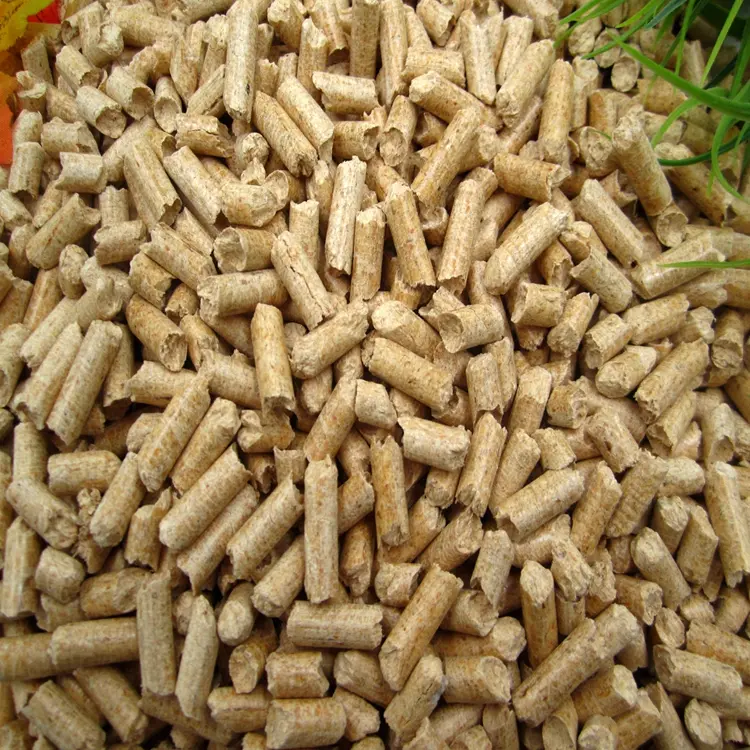
What Are The Health Benefits Of Using Clumping Wood Cat Litter For Both Cats And Their Owners?
Clumping wood cat litter offers several health benefits for both cats and their owners. These benefits stem from its natural composition, minimal dust production, and antimicrobial properties, making it a healthier choice compared to traditional clay litters.
1. Reduced Respiratory Issues
One of the most significant health benefits of clumping wood cat litter is its minimal dust production. Traditional clay litters, especially those containing silica, can produce a substantial amount of fine dust. Inhaling this dust can lead to respiratory problems in both cats and humans. Cats may develop conditions such as asthma or chronic bronchitis, while owners, particularly those with allergies or asthma, can also suffer from respiratory issues. Clumping wood litter produces very little dust, reducing the risk of these health problems and providing a cleaner, healthier environment for both cats and their owners.
2. Natural Antimicrobial Properties
Wood fibers, particularly those from pine and cedar, possess natural antimicrobial properties. These properties help to inhibit the growth of bacteria, mold, and other pathogens in the litter box. This not only contributes to better odor control but also reduces the risk of infections. Cats are less likely to be exposed to harmful microorganisms that can cause urinary tract infections, respiratory infections, and other health issues. The natural antimicrobial action of wood litter also benefits owners by reducing the presence of germs in the home environment.
3. Chemical-Free Composition
Clumping wood cat litter is typically free from the chemical additives and synthetic fragrances found in many clay litters. These chemicals can cause allergic reactions, skin irritations, and respiratory problems in sensitive cats. Some cats may develop contact dermatitis or experience sneezing and coughing when exposed to chemically treated litters. By using a natural, chemical-free litter, pet owners can minimize these risks and ensure a safer, more comfortable environment for their cats.
4. Improved Odor Control
Effective odor control is crucial for maintaining a pleasant living environment. Wood litter naturally neutralizes odors through its absorbent properties and pleasant natural scent. This reduces the need for artificial deodorizers, which can contain volatile organic compounds (VOCs) that may contribute to indoor air pollution and pose health risks. A fresh-smelling litter box is beneficial for both cats and owners, promoting a more hygienic and comfortable home.
5. Gentle on Paws
The texture of clumping wood cat litter is generally softer and gentler on cats’ paws compared to the coarse granules of clay litter. This is particularly beneficial for cats with sensitive paws, older cats, or those recovering from surgery. A comfortable litter box experience encourages regular use, promoting better hygiene and reducing the risk of inappropriate elimination behaviors.
6. Minimized Tracking and Cleaner Home
Clumping wood litter tends to track less than fine clay litter, meaning fewer particles are carried out of the litter box on cats’ paws. This reduces the amount of litter scattered around the home, contributing to a cleaner living environment. Less tracking also means less frequent cleaning and vacuuming for owners, reducing exposure to dust and allergens.
7. Safer for Kittens
Kittens are particularly vulnerable to the hazards of traditional clay litters. They are more likely to ingest litter particles, either out of curiosity or during grooming. Ingesting clay litter can lead to gastrointestinal blockages and other health issues. Clumping wood litter, being made from natural wood fibers, poses less risk if ingested. While ingestion of any litter should be minimized, wood litter is generally considered safer for young and curious kittens.
In conclusion, clumping wood cat litter offers numerous health benefits for both cats and their owners. Its minimal dust production reduces respiratory issues, while natural antimicrobial properties help control bacteria and odors. The chemical-free composition and gentle texture make it a safer and more comfortable option for cats. Additionally, reduced tracking and improved hygiene contribute to a cleaner and healthier home environment. By choosing clumping wood cat litter, pet owners can enhance the well-being of their feline companions and themselves.
What Are The Different Types Of Clumping Wood Cat Litter, And How Do They Vary In Performance?
Clumping wood cat litter comes in various types, each with unique characteristics that affect performance. Understanding these differences can help pet owners choose the best option for their needs and preferences.
1. Pelleted Wood Litter
Pelleted wood litter consists of compressed wood fibers formed into small, dense pellets. These pellets are highly absorbent and expand when they come into contact with moisture, forming solid clumps that are easy to scoop. Pelleted wood litter is particularly effective at controlling odors due to its high absorption rate and natural wood scent.
Performance:
Absorption: Pelleted litter excels in absorption, quickly soaking up moisture and forming firm clumps.
Odor Control: The natural scent of wood, especially pine, effectively neutralizes odors.
Dust Production: Minimal dust is produced, making it suitable for cats and owners with respiratory sensitivities.
Tracking: Larger pellet size reduces tracking compared to finer granules.
2. Granular Wood Litter
Granular wood litter is made from finely ground wood fibers that resemble traditional clay litter in texture. The smaller granules are still highly absorbent and form tight clumps when exposed to moisture. This type of wood litter provides a more familiar texture for cats accustomed to clay litter, easing the transition process.
Performance:
Absorption: Granular wood litter absorbs moisture effectively and forms solid clumps.
Odor Control: The fine granules quickly trap odors, though the scent may not be as strong as pelleted wood.
Dust Production: Although dust levels are low, they may be slightly higher than pelleted litter.
Tracking: Finer granules may track more than pellets but generally less than traditional clay litter.
3. Mixed Wood Litter
Mixed wood litter combines various types of wood fibers to enhance performance. This blend may include both pelleted and granular forms or a mixture of different wood types such as pine, cedar, and spruce. The combination aims to balance absorption, clumping ability, and odor control.
Performance:
Absorption: Mixed wood litter benefits from the combined properties of different wood types, offering superior absorption.
Odor Control: The blend of woods provides robust odor control with a pleasant natural scent.
Dust Production: Dust levels are kept low due to the mix of larger and smaller particles.
Tracking: Tracking is minimized through the use of varied particle sizes.
4. Enhanced Wood Litter
Some wood litters are enhanced with additional natural materials like corn, wheat, or plant extracts to boost performance. These additives can improve clumping, enhance odor control, and add a pleasant scent.
Performance:
Absorption: Enhanced wood litter offers exceptional absorption due to the added materials.
Odor Control: Additional natural ingredients provide superior odor neutralization.
Dust Production: Dust levels remain low, with the added materials often contributing to this benefit.
Tracking: Tracking varies depending on the blend but generally remains low.
Comparison of Performance Factors
1. Absorption and Clumping
Pelleted and granular wood litters both offer excellent absorption and clumping abilities. Pelleted litter absorbs moisture quickly and forms firm clumps, while granular litter mimics the feel of traditional clay litter with effective clumping. Mixed and enhanced wood litters take advantage of multiple materials to provide superior absorption and clumping performance.
2. Odor Control
Pelleted wood litter is particularly effective at controlling odors due to its high absorption rate and natural pine scent. Granular wood litter also controls odors well, though the scent may be less pronounced. Mixed and enhanced wood litters offer the best odor control by combining the properties of different woods and additional natural materials.
3. Dust Production
All types of wood litter produce minimal dust compared to clay litters. Pelleted wood litter typically has the least dust, followed by mixed and enhanced litters. Granular wood litter may produce slightly more dust but still significantly less than traditional clay litter.
4. Tracking
Pelleted wood litter tracks the least due to its larger size, while granular wood litter may track more but still less than clay litter. Mixed and enhanced wood litters strike a balance, minimizing tracking through varied particle sizes.
Clumping wood cat litter comes in various types, each offering unique benefits and performance characteristics. Pelleted wood litter excels in absorption and odor control with minimal dust and tracking. Granular wood litter provides a familiar texture with effective clumping and odor control. Mixed and enhanced wood litters combine the best properties of different materials for superior performance. By understanding these differences, pet owners can select the most suitable clumping wood litter for their feline companions, ensuring a clean, healthy, and comfortable environment.
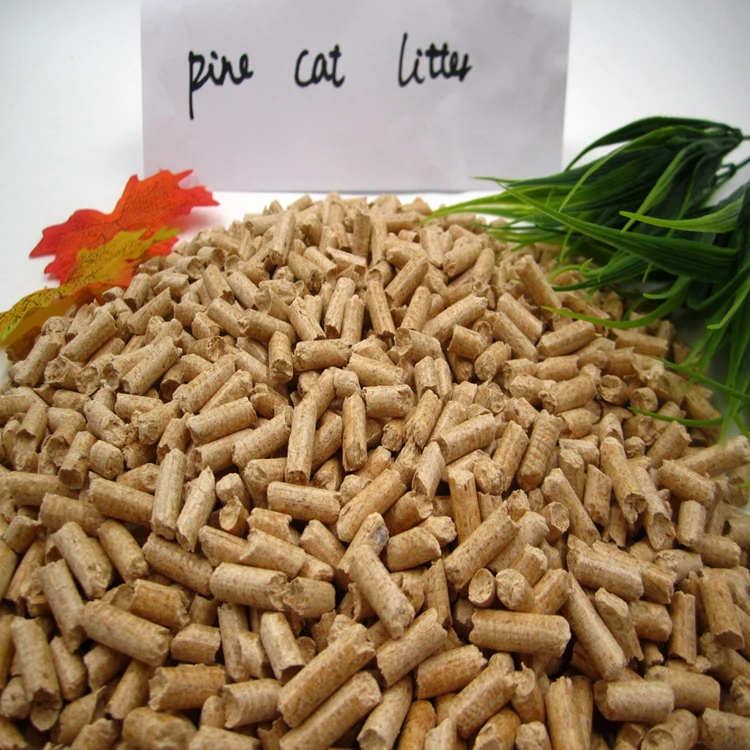
How Do i Properly Dispose Of Clumping Wood Cat Litter To Minimize Environmental Impact?
Proper disposal of clumping wood cat litter is crucial to minimizing environmental impact. Unlike traditional clay litters, wood litter offers several eco-friendly disposal options that can reduce landfill waste and promote sustainability. Here are some methods and tips for disposing of clumping wood cat litter responsibly:
1. Composting
One of the most eco-friendly ways to dispose of clumping wood cat litter is by composting it. Wood litter is biodegradable and can be added to a compost pile, provided certain precautions are taken.
Steps for Composting:
Separate Waste: Ensure that only the used wood litter (excluding feces) is added to the compost. Cat feces can contain harmful pathogens, so it's best to dispose of it separately.
Compost Bin: Use a dedicated compost bin for cat litter to avoid contamination of regular compost used for edible plants.
Layering: Mix the wood litter with other compostable materials such as grass clippings, leaves, and vegetable scraps to balance carbon and nitrogen levels.
Aeration: Regularly turn the compost pile to aerate it, promoting faster decomposition.
Curing Time: Allow the compost to cure for at least 6-12 months before using it in gardens, ensuring that any potential pathogens have been neutralized.
Benefits:
Reduces landfill waste.
Produces nutrient-rich compost that can be used to enrich soil.
Promotes a circular economy by turning waste into a valuable resource.
2. Mulching
Used wood litter can also be used as mulch for non-edible plants and garden areas. The natural wood fibers decompose over time, enriching the soil.
Steps for Mulching:
Drying: Allow the used wood litter to dry out before using it as mulch.
Application: Spread a thin layer of the dried wood litter around plants, avoiding direct contact with plant stems.
Mixing: Mix the wood litter with other organic mulching materials such as straw or bark chips for better results.
Benefits:
Helps retain soil moisture and suppress weeds.
Enriches the soil as it decomposes.
Provides an eco-friendly way to dispose of used litter.
3. Landfill Disposal
If composting or mulching is not feasible, clumping wood cat litter can be disposed of in the trash, destined for landfill. While this is not the most environmentally friendly option, wood litter still offers advantages over clay litter in terms of biodegradability.
Steps for Landfill Disposal:
Bagging: Place the used litter in a biodegradable or compostable bag to reduce plastic waste.
Sealing: Seal the bag tightly to prevent odors and leaks.
Trash Disposal: Dispose of the bag in the regular trash.
Benefits:
Wood litter decomposes more quickly in landfills compared to clay litter, reducing long-term environmental impact.
Biodegradable bags help minimize the overall plastic footprint.
4. Flushing
Some clumping wood litters are labeled as flushable, meaning they can be disposed of down the toilet. However, this method should be approached with caution.
Considerations for Flushing:
Read Labels: Ensure the litter is explicitly marked as flushable.
Small Amounts: Only flush small amounts at a time to avoid plumbing issues.
Local Regulations: Check local regulations and water treatment facilities' guidelines, as not all systems can handle flushable litter.
Benefits:
Immediate and convenient disposal method.
Reduces the amount of litter going to landfills.
5. Burning
In some rural areas, burning wood litter might be an option, especially if wood stoves or outdoor incinerators are available.
Steps for Burning:
Safe Setup: Ensure a safe and controlled environment for burning.
Small Quantities: Burn the litter in small quantities to avoid overwhelming the fire and producing excessive smoke.
Ventilation: Ensure good ventilation to minimize inhalation of smoke and fumes.
Benefits:
Reduces waste volume significantly.
Provides an immediate disposal solution.
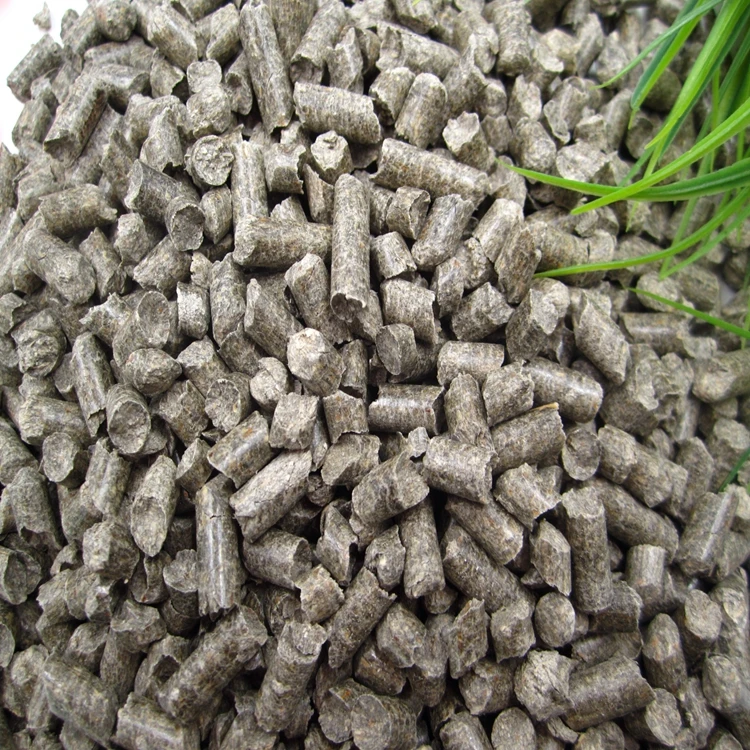
Conclusion
Clumping wood cat litter represents an innovative and eco-friendly alternative to traditional clay-based litters. Its environmental benefits, health advantages, effective odor control, and efficient clumping ability make it a compelling choice for modern pet care. While cost and availability may present challenges, the long-term benefits and sustainable nature of wood litter offer a valuable solution for conscientious pet owners. As awareness and demand for eco-friendly products continue to grow, clumping wood cat litter is poised to become a mainstay in the world of feline hygiene, aligning with broader trends towards sustainability and health-conscious living. By embracing such innovations, pet owners can contribute to a healthier environment and provide better care for their feline companions.
If you have any needs, please feel free to contact us.
